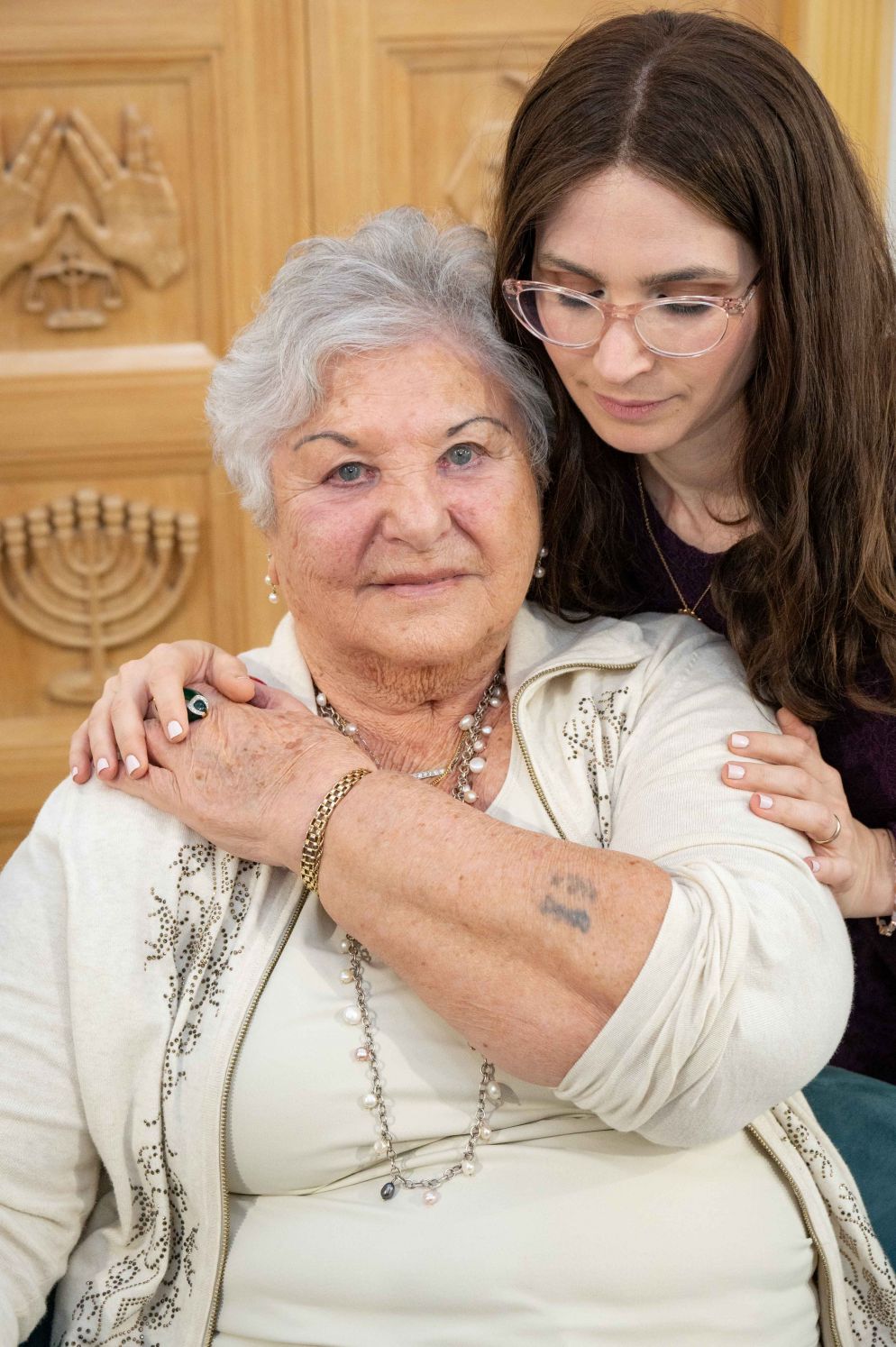Though her family calls her “Bubby,” Lilly Appelbaum Malnik is not an ordinary grandmother. She is a survivor of countless atrocities, having been deported to Auschwitz at a young age after the German army invaded her hometown of Antwerp. And now, she is a TikTok influencer, using the app to share her stories with millions of viewers.

On Sunday, Feb. 26, Chabad of Ellicott City hosted an event at the Chabad Lubavitch Center for Jewish Life Howard County focusing on Malnik, giving her an opportunity to speak on her experiences in an in-person setting to other members of the Jewish community. She was joined by her granddaughter, emergency room nurse Miriam Ezagui, as well as famed Nazi hunter Eli Rosenbaum, a counselor for war crimes accountability at the U.S. Department of Justice and a recipient of the Elie Wiesel Award.
“I asked her if she would be willing to share her memories of the Holocaust, and I did not have to ask her twice,” said Ezagui, who originally started a TikTok account to promote her baking. She initially did not openly identify as Jewish online, but asked Malnik if she would be willing to speak on her experiences during the Holocaust after Whoopi Goldberg made an ill-informed comment about the Holocaust on “The View.” “She’s always been willing to share,” she said of Malnik.
Malnik, a resident of Clarksville, now shares her stories of the Holocaust on Ezagui’s TikTok account, @miriamezagui, which boasts 1.4 million followers.
“I force myself to talk about [my experiences] to show the people that they shouldn’t forget, they should remember what we went through in life,” Malnik said.
Now 94 years old, Malnik was liberated from Auschwitz at 16, having spent five years imprisoned there. She narrowly avoided capture early on, as the rest of her family was taken to the camps while she was recovering from a tonsillectomy in the hospital. From there, her gentile neighbors took her in and hid her from the Nazis.
She recalled an especially harrowing experience from when she was working as a beautician during this time — a Nazi soldier came in to have his nails manicured, and she was made to take care of him.
“I don’t know how I didn’t cut his fingers, because my hands were shaking,” she remembered. “But I gave him a manicure and a hand massage, and he left me a nice tip.”
Unfortunately, she was captured by Nazi soldiers while going to visit her aunt and uncle and taken to Auschwitz.
Malnik’s story of being sheltered by gentile neighbors before being taken to Auschwitz may sound familiar — on her way to the camp, she was actually on the same transport as Anne Frank, but the two did not know each other.
At Auschwitz, Malnik worked in the camp’s kitchens. While a much sought-after position for prisoners at the camp, it did not mean that her life was any easier. During her time there, she had three separate run-ins with the infamous Dr. Josef Mengele, a Nazi doctor known as “The Angel of Death” for his inhumane experiments on prisoners.
“After the war, he became one of the most wanted war criminals in history,” said Rosenbaum, who was involved with tracking his whereabouts. “His name lives on in infamy, almost emblematic of Nazi cruelty.”
Malnik has told many stories about her time at Auschwitz on TikTok, with the one garnering the most attention being about how she and the other kitchen workers were made to put chemicals in the food they made. She described it as a pink sand that the workers called “saltpeter,” though its identity was unclear. It allegedly stopped the female prisoners from undergoing menstrual cycles.
This story was later cited in a study by a Canadian professor, who contacted Malnik and Ezagui, about how Nazis were drugging women in concentration camps.
Malnik is profiled in the United States Holocaust Memorial Museum’s Holocaust Encyclopedia, which provides comprehensive descriptions of Holocaust-related terms and concepts and profiles of many of the people who were forced into concentration camps.
Belgium was liberated from Nazi control shortly after she was taken to Auschwitz, but this fact did not give her any hope. “You can imagine how I felt, knowing that Belgium was liberated while I was still looking up to the stars and crying in Auschwitz,” Malnik said.
She was finally liberated in 1945 after a forced death march to the Bergen-Belsen camp, but she was extremely sick at the time due to the poor living conditions there.
“They say a dead person … a cadaver … weighs 70 pounds, which is skin and bones,” she recalled. “That’s how I was. I don’t know if I would have lasted another week.” She was sent back to Belgium with the Belgian Red Cross after receiving medical attention, and would later immigrate to the United States.
The event was largely organized by Rabbi Yanky Baron of Chabad of Ellicott City. They were also assisted by three other local Chabad branches: Chabad of Clarksville, Chabad of Greater Laurel and the Chabad Lubavitch Center in Columbia where the event was hosted.
“In light of rising antisemitism, I felt that we needed to see and hear firsthand from someone who experienced genocide,” explained Baron. “There was no word to describe what a genocide it was, you have to see it firsthand. You have to see the pain on her face as she describes her harrowing stories to really feel it.”
He noted that an especially impactful moment for him was when an audience member asked Malnik if she had sought therapy after her experiences, which she denied.
“How could a therapist take care of me when they don’t have my experiences?” she asked. “I decided I would be my own therapist.
“If we don’t talk and don’t tell of what happened to us,” Malnik concluded, “how will the world know to try and fight so it will never happen again?”







